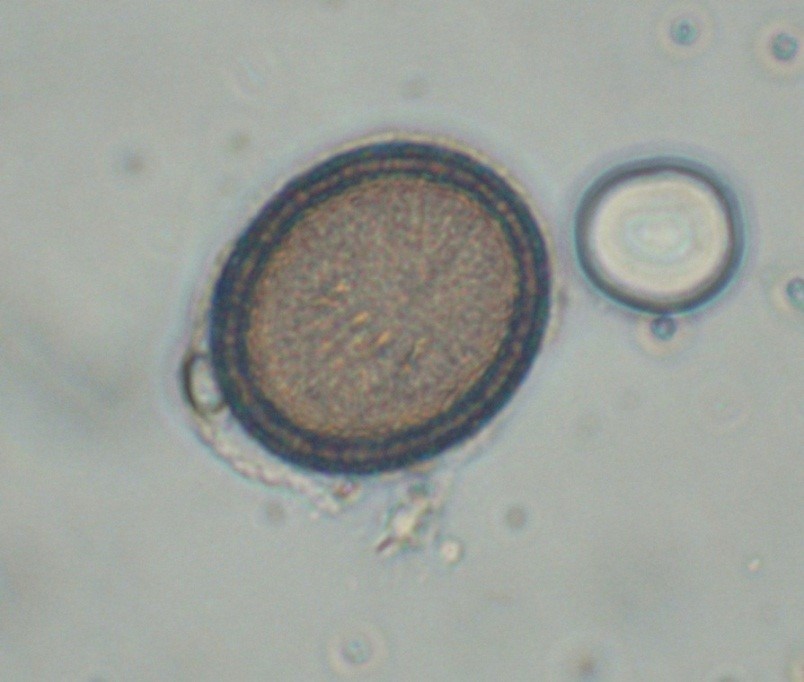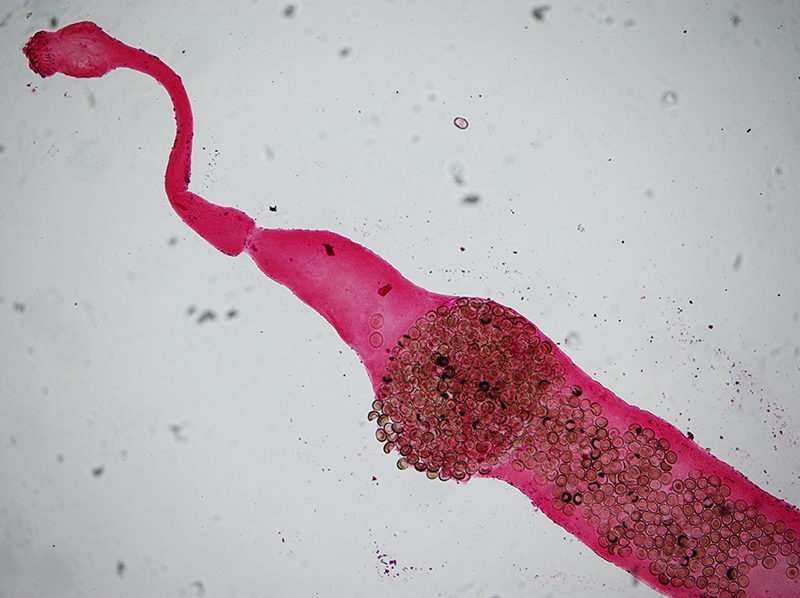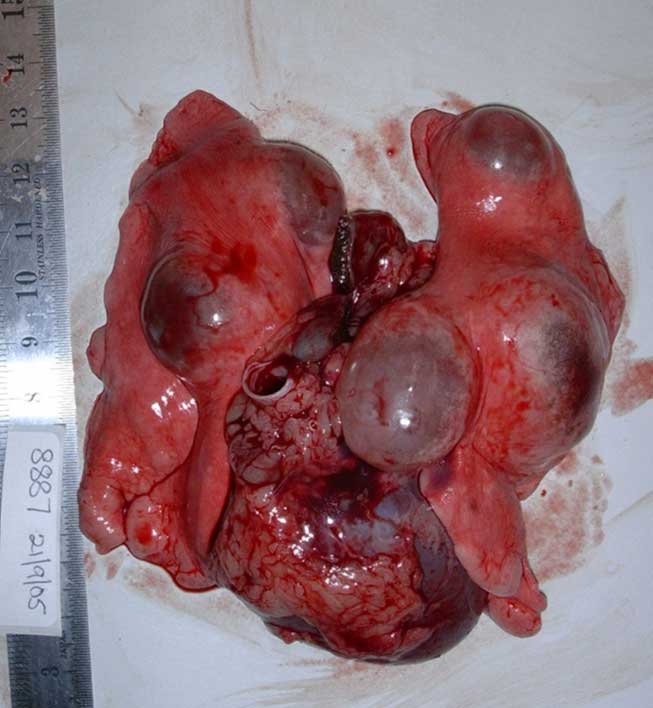Hydatid Tapeworm
(Echinococcus granulosus)
The parasite is of no clinical significance in dogs however eggs passed by dogs infect humans and livestock to produce hydatid cysts in visceral organs resulting in significant public health and economic impacts.
Distribution
Echinococcus granulosus is distributed globally, but appears to be highly endemic in cooler regions of the sub-tropics (e.g. northern India, Southern Brazil), especially in rural areas where offal is readily accessible to farm and community dogs. It has not been reported in many parts of tropical Africa, Southeast Asia, Central America and the Caribbean.
Clinical signs
Dogs are unlikely to show clinical signs of infection.
Diagnosis
Should be based on the animal’s history i.e. access to raw offal. Detection of eggs and proglottids on standard faecal flotation is unreliable as eggs are rarely shed in faeces. When present, eggs are morphologically indistinguishable from eggs of Taenia spp. (Fig 1). Anthelmintic purgation and examination of adult worms is not recommended due to the zoonotic risk associated with accidental ingestion of E. granulosus eggs. Adult worms are minute, measuring 3-9 mm, with a maximum of 3 segments (Fig 2).

Figure 1 Taeniid egg on faecal floatation. (Image credit: Dr. R. Traub)

Figure 2 E. chinococcus granulosus adult worm stained with carmine. (Image credit: Dr. A. D. Milhalca)
Treatment
Praziquantel given orally at 5 mg/kg is the drug of choice.
Control
Owners should be strongly encouraged to limit the access of their dog to offal of domestic or wild intermediate hosts (e.g. livestock, horses, camels). In E. granulosus-endemic areas, dogs should be treated with praziquantel at 6-weekly intervals. It is imperative that the dog’s faeces are promptly disposed of up to 48 hours following treatment. Faeces can be burnt, deep buried or disposed of in a flush latrine or septic tank. Targeting intermediate hosts for cystic echinococcosis control may be undertaken through surveillance and meat inspection at slaughter but also using an infection preventive vaccine (EG95). Awareness campaigns are critical.
Public health considerations
Humans acquire infection by ingesting eggs through direct contact with the dog (eggs stick to dogs’ coat and are infective immediately upon defaecation) or via ingesting eggs in contaminated food or water. In humans, infection may be asymptomatic or may reflect impairment of organ function (e.g. brain, lung, heart, liver, etc.) as a result of hydatid cysts (Fig 3) putting pressure on adjacent organs. Typically, hydatid disease has a prolonged incubation period of years (cysts take time to grow). Rupture or leakage of a cyst can lead to fatal anaphylactic shock. Treatment is complicated and usually requires a combination of surgical and chemotherapeutic intervention.

